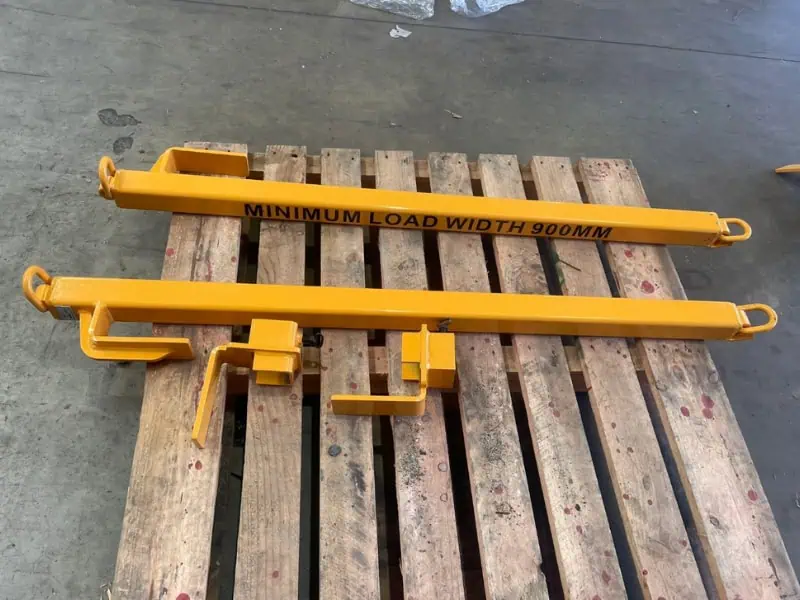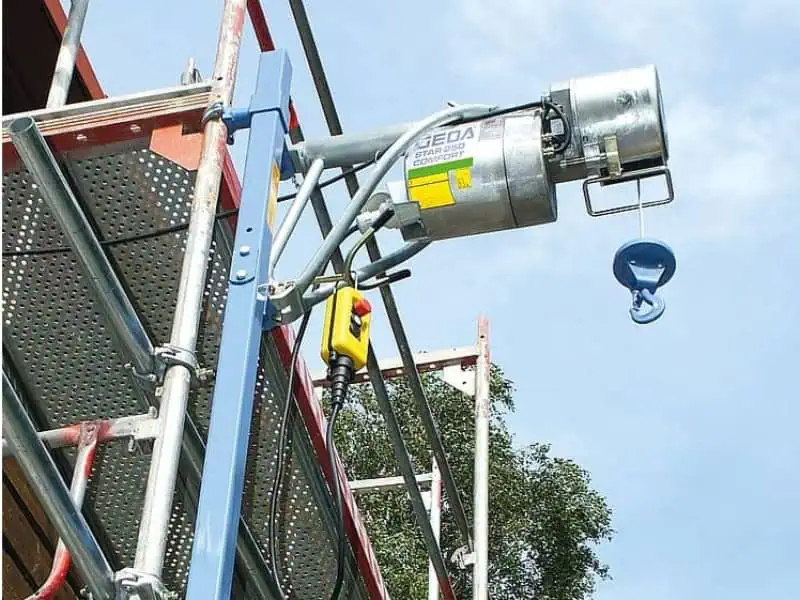A bulk material handler enhances heavy-duty operations by standardising lifts, streamlining product flow, and reducing downtime across shifts. It removes bottlenecks, reduces manual strain, and maintains steady throughput even when the shed is at full capacity. Sensors, attachments, and tuned controls reduce errors and make awkward loads manageable without mucking about. This article outlines how to integrate, upgrade, and tailor equipment choices so your site can move more safely and efficiently
What operational tasks does a bulk material handler perform in a warehouse?
A handler sets the pace of your floor by metering infeed, staging pallets, and clearing waste streams. It also coordinates with conveyors and hoists so each move lands cleanly and on time. That alignment delivers consistent throughput under pressure and steadier shifts. Here are the key warehouse tasks and why they matter:
- Infeed metering: Smooths bursts into a controlled flow, preventing jams and idle belts.
- Pallet staging: Positions outbound loads by route or priority to reduce double handling.
- Bin and hopper shuttling: Moves bulk media between cells without delays or spills.
- Rejects and fines removal: Maintains clear lines and high quality during extended runs.
- Attachment-driven picks: Safely grabs drums, packs, and irregular loads with reduced risk.
- Cycle-time balancing: Coordinates upstream and downstream timing to avoid queuing.
For projects with mixed SKUs, matching capacity and attachments to duty is essential. When specifying gear and accessories, consider throughput targets, lift heights, and aisle constraints. To compare suitable options aligned with Australian worksites, consider quality material handling solutions for demanding projects as a baseline. Then, map features to your load profiles and floor plan to ensure changes stick.
How does a bulk material handler integrate with conveyor and hoist systems?
Integration succeeds when feed rate, belt speed, and lift cycles work as one. The handler regulates infeed while conveyors pace horizontal travel, and hoists manage vertical moves. Done right, you get precise transfers and fewer cleanup runs. Here are the practical integration moves that pay off:
- Matched feed-to-belt tuning: Sets start/stop logic to avoid surges and the risk of spillage at transfer points.
- Sensor placement: Adds photo-eyes near chutes to trim timing and reduce belt slip.
- Attachment selection: Utilises rotators, clamps, and spreaders to stabilise odd shapes during transfer.
- Interlocks and PLC handshakes: Links panels so emergency stops and resets stay coordinated.
- Clearances and access: Preserves service space for pulleys, guards, and lube points.
- Dust and heat control: Matches covers and idlers to abrasive or hot product conditions.
If your belts are experiencing tracking or carryback issues, review cover grades and ply counts. For deeper selection guidance, explore heavy-duty conveyor belt types for large-scale projects to align belt specs with temperature, oil, or abrasion risks, then calibrate speeds to actual payloads. With tidy coordination, sites see lower unplanned downtime and steadier shifts. Still, plan for power draw, as higher energy consumption during peak load can be costly during extended periods.
Why choose a bulk material handler over manual lifting for heavy loads?
Manual lifts can increase output and heighten injury risk. Mechanised handling delivers firmness and repeatability, especially with shifting or fragile loads. Operators focus on flow while the machine handles mass and centre-of-gravity quirks, resulting in reduced manual strain and better product integrity. Here are the reasons mechanised handling beats manual moves:
- Ergonomic protection: Cuts bending, twisting, and overexertion during peak periods.
- Attachment precision: Grips drums, pallets, and packs without crushing or tipping.
- Fewer reworks: Minimises mis-picks and pallet damage that slow dispatch.
- Better visibility: Cameras and lighting improve placement in tight lanes.
- Consistent cycle timing: Stabilises takt time, even when the workload is at its peak.
- Labour redeployment: Transfers people from manual labour to quality and maintenance roles.
Cost and safety gains accumulate across the year. Injury claims ease, morale lifts, and output climb without risky shortcuts. That’s a fair dinkum improvement for crews and schedules.
When should you upgrade your site’s material handling system?
Upgrading your bulk material handler becomes crucial when performance drops or repetitive faults occur. Chronic queues, tracking dramas, and near-miss reports are early warnings. Don’t wait for a full stop before acting.
Here are some upgrade triggers and actions:
| Trigger condition | Symptom on the floor | Business impact | Recommended action |
| Hourly throughput misses the target | Queues at the infeed | Overtime and late dispatch | Increase feed capacity and re-tune PLCs |
| Repeated belt mistracking | Spillage at transfer | Cleanup time and wear | Upgrade belt spec and add tracking devices |
| Frequent near-miss reports | Awkward lifts persist | Injury risk and claims | Add rated attachments and move pick points |
| High corrective maintenance | Rush repairs weekly | Lost uptime | Shift to a condition-based maintenance plan |
Here are the steps that make an upgrade stick:
- Fault logging discipline: Capture dates, causes, and fixes to expose patterns.
- Real payload checks: Compare weigh data to safe limits before new lifts go live.
- Layout simplification: Remove crossings and blind corners to smooth flows.
- Commissioning windows: Schedule training and changeovers to reduce hiccups.
- Spare parts planning: Hold common wear items to cut repair delays.
- Service access design: Ensure guards and hatches open without gymnastics.
If belts continue to struggle with wear or heat, enhance your knowledge by understanding conveyor belt types and selecting covers that match your specific duty. Expect training time during commissioning, but the gains outlast the learning curve. After six weeks, review the data and adjust settings as needed.
Can advanced lifting equipment reduce downtime and improve safety?

A bulk material handler equipped with advanced lifting technology can significantly reduce downtime, ensuring crews remain safe and productive. Here are the safety-first upgrades worth prioritising:
- Rated attachments: Match clamps, forks, and spreaders to true payload and geometry.
- Vision aids: Add cameras for blind picks, reversing, and tight approach paths.
- Pre-start routines: Standardise checks to catch leaks, frayed slings, and loose guards.
- Incident feedback loops: Close out near-miss reports with fixes and training.
- Zoning and signage: Mark travel lanes to separate plant and foot traffic.
- Control integration: Ensure E-stops and lock-outs are consistent across equipment.
To align site practice with regulation and incident lessons, learn how NSW construction safety standards help prevent workplace incidents. Apply those insights to risk registers, then adjust procedures and training cadence. As a result, downtime falls and operators head home safe each arvo.
How can you tailor material handling solutions to specific site needs?
No two sites share the same loads, lanes, or hygiene constraints. Fit-for-purpose solutions start with payload, duty cycle, and aisle width, then layer in dust control and temperature.Here are the tailoring moves that keep options open:
- Attachment right-sizing: Select clamps, rotators, and spreaders for the heaviest regular job.
- Belt and hoist pairing: Align belt width, ply count, and hoist rating to real cycle data.
- Staged rollouts: Pilot one zone, prove the gains, then replicate across the shed.
- Maintenance rhythm: Set intervals by hours worked, not calendar months.
- Quick-swap setups: Use pin-and-lock or tool-less swaps for fast changes.
- Data visibility: Capture load and stoppage data to guide the next upgrade.
A modular bulk material handler plan provides resilience during spikes in demand. When new contracts land, capacity can scale without starting from scratch.
Final thoughts
A clear plan beats patchwork fixes. Prioritise the lifts and lanes that cause stoppages, then match capacity, attachments, and belt specs to those jobs. Review outcomes after commissioning and keep settings honest with measured data. For next steps focusing on goals, constraints, and safe deployment, discover how Conveying & Hoisting Solutions supports safer material handling through a low-pressure benchmarking process before changes go live. The right plan reduces risk, speeds flow, and promotes sustainable throughput without fuss.




